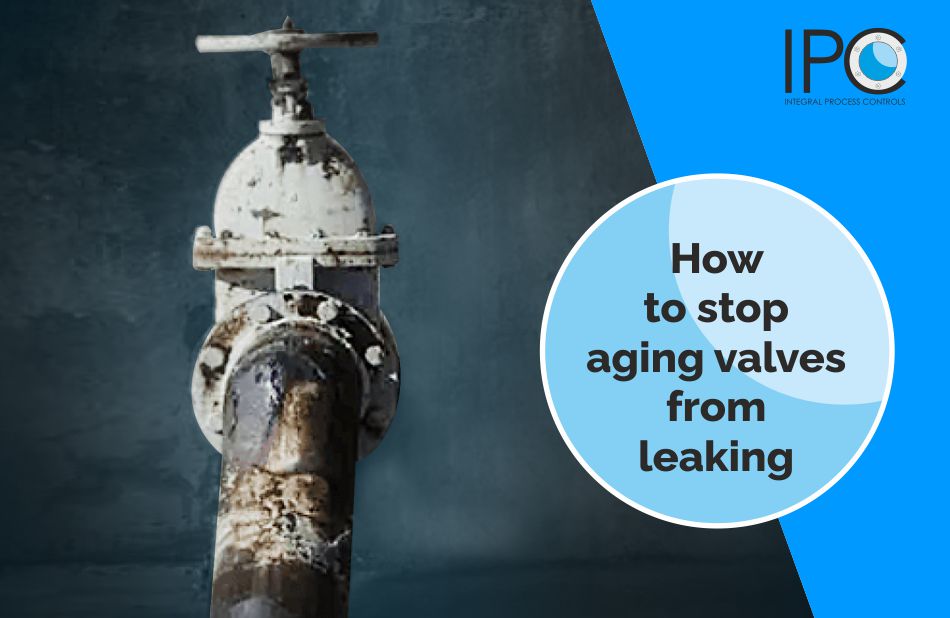Big, ageing valves sometimes leave your business in a considerably tricky situation.
While small valves are quickly replaceable, many big valves at critical points have been in use for decades. This happens because maintaining and upgrading them is economically cheaper than replacing them. Hence, many businesses choose to continue operating older valves till their replacement is inevitable. However, maintaining old valves in use is not an easy job. You could explore here, the 5 key symptoms that denote your valve’s lifespan is reducing!
Older valves need better leakage protection
Businesses face increasingly stringent environmental regulations and the need to maintain high profits. At the same time, as the equipment ages, the costs of maintaining the plant are also rising. As valves age, they are more prone to leakages.
- Fugitive emission leaking out of the valve can cause serious environmental pollution and endanger human health.
- The entire piping system is put at risk from leakage that remains in the piping system.
Why do valves leak?
Internal leakage
Truth be told, no valve is designed to close off 100%. The ANSI/FCI standard sets a Maximum Allowable Leakage (MAL) limit for valves. There are six different classifications of leak rate, and your valve needs repairs only if its leakage is crossing the MAL for its class & size.
Some possible reasons for internal leakage include:
- Wear and tear of internal components
- Improper calibration of positioner
- Improper configuration of the controlling system
- Wrong actuator setup.
External leakage
The most glaring example of external leakage from valves is fugitive emissions. In most cases, external leakage happens mainly due to failure of packing.
In case of aging valves, factors contributing to external leakage include
- High temperature in packing boxes
- Lack of proper maintenance
- Incompatibility with material
- Vibrating valve assembly
- Thermal cycling
Preventing the leakage in old valve
Preventing the leakage entails improving the sealing mechanism of the ageing valve. To that end, attention should be paid to key components responsible for the proper sealing of the valve. Read more here about 5 major threats that can damage your valve packing.
Stuffing boxes
In earlier times, deep stuffing boxes were considered to be good, resulting in many older valves having such stuffing boxes. However, such boxes lower the sealing performance of the valve by causing higher stem friction and relaxation of the packing. Inserting a metallic or carbon filler bushing into the stuffing box could help address the sealing issue. Note that despite the depth of the stuffing box, the number of packing rings in the stuffing box should preferably be kept at five.
Studs and gland force
Studs or gland bolts are instrumental in applying the required gland force on packing to bring about perfect sealing. Older bolts cannot do this effectively. Hence, studs of an older valve should be replaced every time the packing is changed. Gland force can also be affected by factors such as wear and tear of packing, packing relaxation, surges in pressure or thermal cycling. Applying live loading can help boost performance in such situations.
Packing and stem
Many older valves use graphite packing material. However, a galvanic reaction between graphite packing and the valve stem could result in pitting corrosion. This issue is resolved by enabling the graphite packing with a corrosion inhibitor. Do note that if the stem condition has deteriorated, it should be immediately replaced.
Quick repair and replacement of valves
Considering the critical nature of valves, quick repair and replacement of failed valves are key. IPC is dedicated to resolving your concerns in exactly this area. We work to supply world-class standardized valves to you in a short lead time. Alongside fast and transparent manufacturing and testing system, IPC also has a stock of all standard equipment components with ERP location charts for quick access. This allows our robust supply chain to quickly deliver any valve components to cater to the urgent needs of the client. To know more, get in touch with us at evalve@ipcvalves.com

